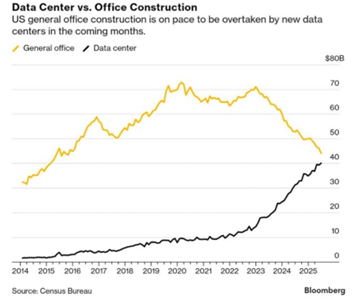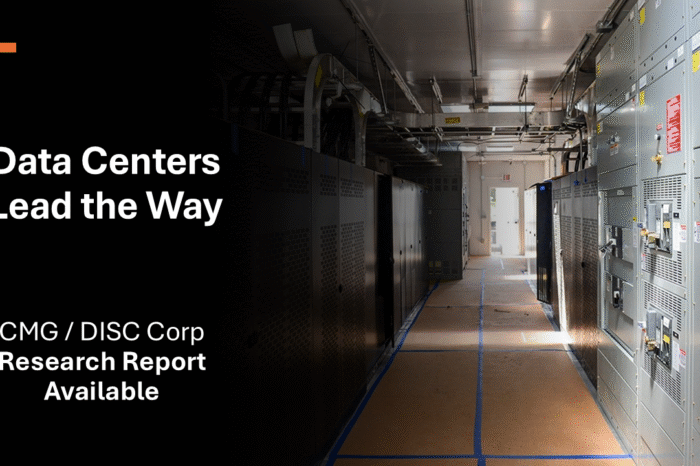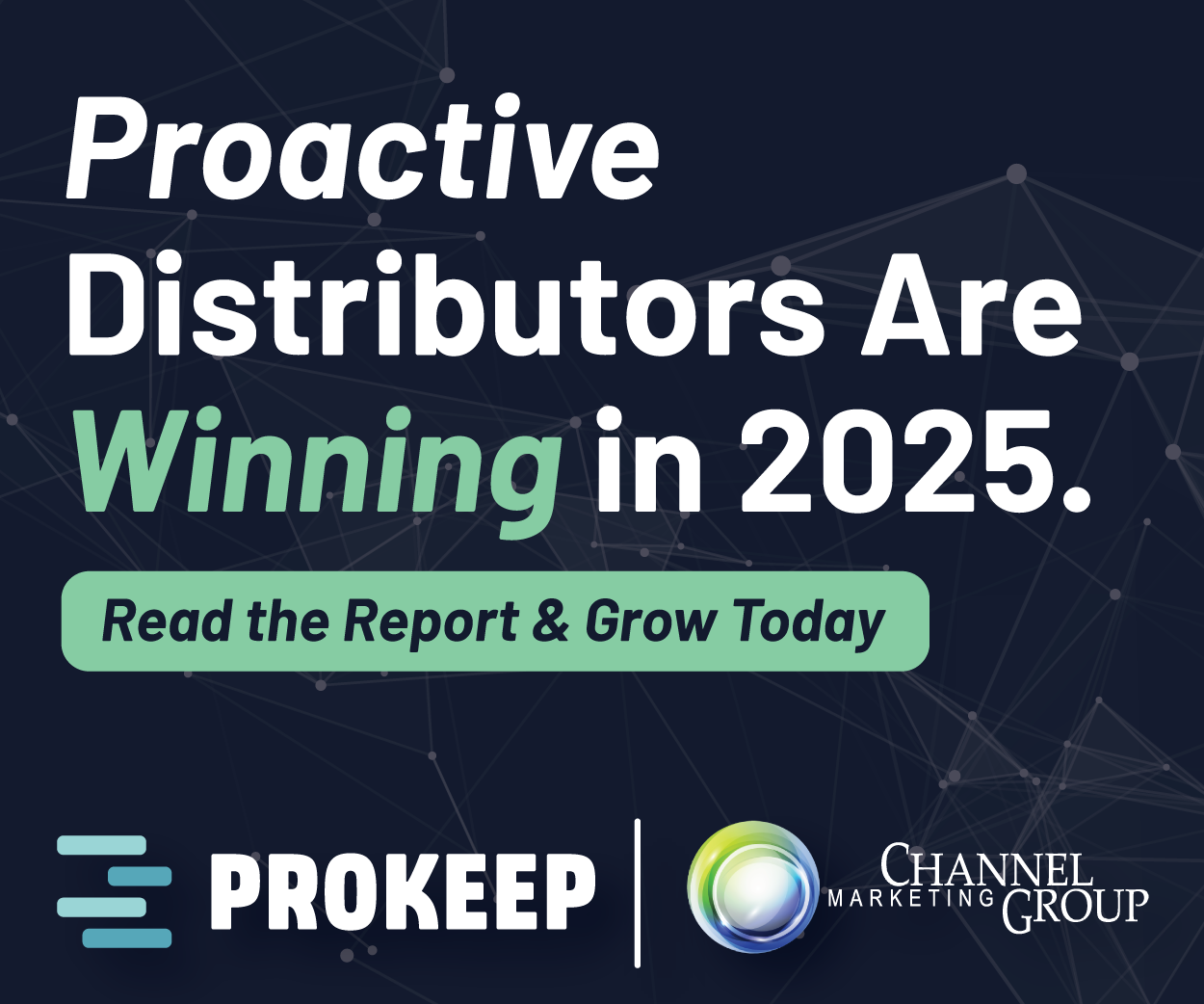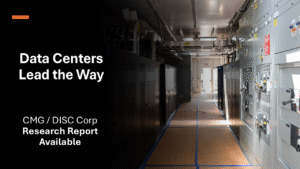Data Centers Lead the Way
 Data centers are perceived as a “huge” market opportunity by almost every manufacturer. Many distributors believe that they should be able to win some business there. Reps are expected to win business there.
Data centers are perceived as a “huge” market opportunity by almost every manufacturer. Many distributors believe that they should be able to win some business there. Reps are expected to win business there.
And yes, there are lots of data centers in the country, and in most markets, but the data centers gaining visibility today, the mega projects, are for AI and are being built by hyperscalers.
While there is much spend within them, as Wesco’s quarterly billion-dollar generation highlights, there is a difference between winning gray space and white space business.
For most electrical distributors, the opportunity is in the gray space. For some it is OSP. Few play in the white space.
But there is also the ripple effect from the mega data centers.
They are built on large tracts of land in rural areas. Employ 1000s of people in the construction phase and then hundreds thereafter to operate them, making good money. The result is they create their own economic ecosystem. Additional residential and commercial opportunities can sprout up in these areas, representing opportunities for business by a broader array of electrical distributors.
Understanding the data center terminology, and ecosystem, is important. Our newly released report, a collaborative effort by Channel Marketing Group and DISC Corp, spearheaded and researched by Kevin Coleman, dives deep into the data center market. (click here to order the report)
CMG / DISC Data Center Report Highlights
Some highlights from the report:

Data centers vs Office Construction Market
- Data centers have led construction growth in the U.S. for nearly two years and are one of the few bright spots in the broader nonresidential construction segment.
- According to ConstructConnect, from Q1 2024 to Q3 2025, data center investments accounted for over 70% of the increase in private nonresidential construction spending.
Since the downturn in 2019, office construction has declined 19%, whereas data center construction has accelerated over 200%.
- According to Harvard economist Jason Furman, U.S. GDP growth in the first half of 2025 was almost entirely driven by investment in data centers and related AI technologies. Excluding these technology-related categories, GDP growth would have been just 0.1% on an annualized basis.
- The market will grow. McKinsey estimates that by 2030, data centers will require $6.7 trillion of investment worldwide.
- Recent quarterly reports from electrical distributors including Wesco, Graybar, and Rexel, along with almost every electrical manufacturer, cite high growth from data centers as the driver of strong, and in some cases, record results.
The data center value chain is complex with multiple layers, starting with the real estate developers who build data centers to the utilities that power them, to the semiconductor firms that produce chips to the cloud service providers or “hyperscalers” that host data to suppliers of adjacent products that are vital to the seamless operation of data centers. Understanding each step of the value chain and the construction process can help identify when and where opportunities for manufacturers and distributors can become involved.
Given the scale of investment in both electrical and HVAC infrastructure and IT products, there is a large and growing opportunity for distributors to participate in the market.
There are multiple ways distributors can participate
- The traditional manner of supplying the broad range of products. The report has revenue multipliers (in end-user sales dollars) for some product categories.
- There are opportunities for the initial construction and outfitting of data centers, and MRO continuing support, including replacement, repair and upgrades. Further, with the pace of change, data centers are expected to have a 3-year cycle for renovation. While this is more in the white space areas, some gray areas may benefit.
- Distributors that offer project management support can provide invaluable assistance to streamline data center builds by ensuring just-in-time delivery of materials aligned with strict timelines, warehousing, kitting, and advanced shipping notifications. On-site material handling services improve labor efficiency at the installation site and reduce time spent transporting materials by providing vendor-managed inventory services like material cages, trailers, and laydown yards. For data centers, time is money.
- There are critical value-added services that localized distributors are uniquely positioned to provide. Distributors who can contribute solutions to complex issues (the need for prefab, on-site storage, storeroom management, power complications, desire for renewables, etc.) provide demonstrable value to developers, contractors and ultimately, end-users.
Distributors Can Win
According to Brightlio, in 2025 about 55% to 60% of U.S. data center market revenue flows through distribution channels—including electrical distributors, IT hardware wholesalers, and infrastructure suppliers. This includes project-based construction materials, electrical and power products, networking hardware, and some packaged service offerings that are specified and procured through distributor networks rather than direct manufacturer sales or owner-sourced purchases.
Distributors play a critical role: nearly two-thirds of data center supply spend is handled via distributor-managed procurement, especially for electrical equipment, cabling, power conditioning, HVAC, and related components essential to data center operations.
Given that data center infrastructure spending, including construction, electrical and HVAC and power is about $78 billion, this translates to a roughly $47 billion opportunity for distributors. Construction and installation spending is tied both to the square footage of data centers and the amount of infrastructure equipment. Rising rack density puts downward pressure on the “white space” square footage for IT equipment but increases the square footage of related “gray space” for infrastructure.
According to industry sources, including Wesco, the gray space is 20-30% of the construction value.
Further opportunities will develop in many parts of the country due to data centers as the power generation capacity issue is addressed – grid modernization and the need for more power generation whether it be renewable, fossil-based (natural gas), or nuclear. More reliable, and inexpensive, need will be needed, generating additional electrical equipment opportunities.
But distributors beware … manufacturers will sell direct in this vertical!
Electrical market growth is closely tied to the electrical capacity of data centers, regardless of square footage or server costs. There are substantial opportunities.
The outlook for electrical is healthy, and distributors have a key role to play, and can benefit from, in the growing data center market.
To learn more, this 25-page report, loaded with insights and information, is available for $199





















